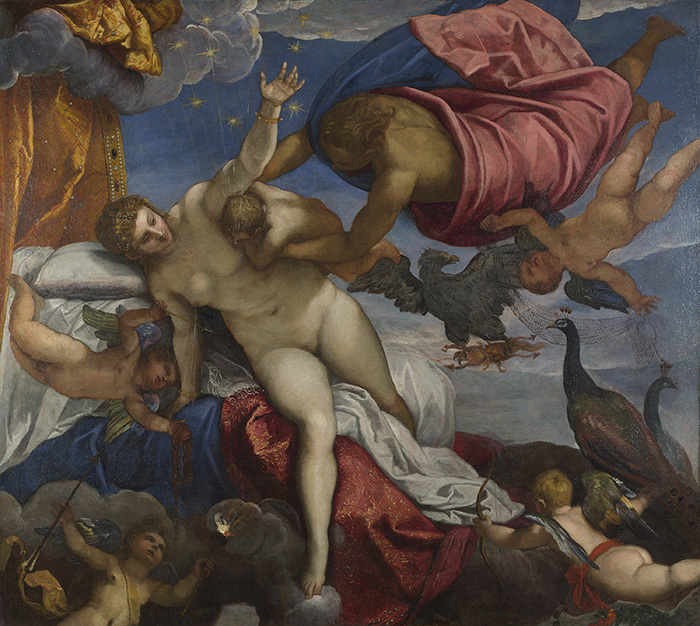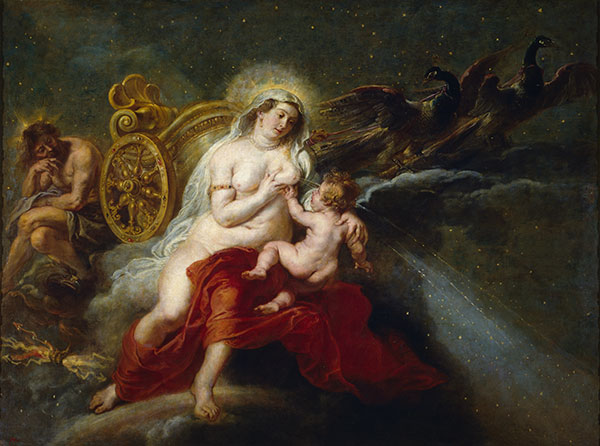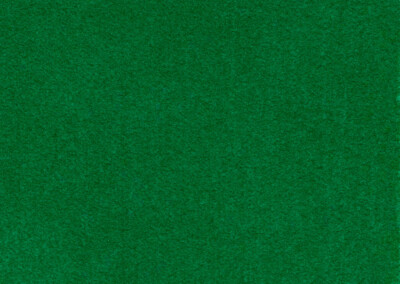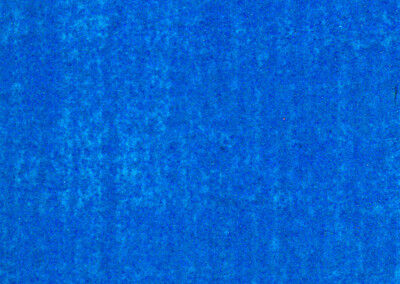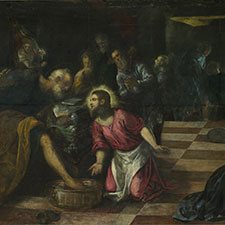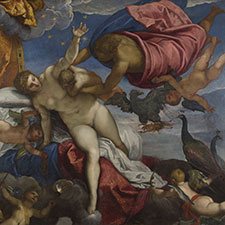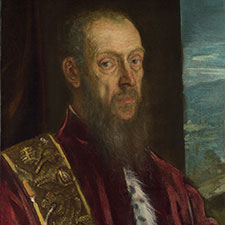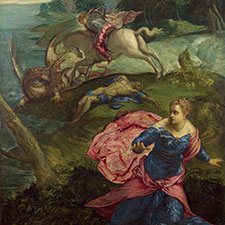Jacopo Tintoretto, The Origin of the Milky Way
ca 1575Jacopo Tintoretto, The Origin of the Milky Way
ca 1575Paintings sorted by Historical period | Painter | Subject matter | Pigments used
Overview
Medium: Oil
Support: Canvas
Size: 149.4 x 168 cm
Art period: Late Renaissance (Mannerism)
National Gallery London
Inventory number: NG1313
Zoomable image in high resolution at Google Cultural Institute
Story
Tintoretto’s painting is based on one version of the ancient Greek myth. Zeus (Jupiter ) was a known womanizer and often seduced mortal women in various disguises. Alcmene was one of his victims and he tricked her by appearing as her own husband. Zeus was very fond of his son Hercules who was born from this liason. He wanted to render him immortal by letting him drink milk from the breast of his own wife Hera (Juno) while she was asleep. But Hera was awakened by the suckling infant and pushed him away. The spilled milk of the goddess became the the Milky Way.
Joyce Plesters gives the following account of Tintoretto’s masterful depiction of the myth (2).
“Tintoretto, who has an unfailing instinct for the psychological moment in any drama, captures it here and the whole composition seems to be exploding like a Catherine wheel in a whirl of shooting stars, radiating limbs and swirling draperies. Incidental props are the attendant ‘putti’, bearing what Cecil Gould terms ‘the usual erotic symbols’ of torches and arrows. The peacocks are Juno’s particular emblem, the eagle and the crab-like object in its claws which is meant as a thunderbolt are Jupiter’s and the net symbolizes deceit, the trick being played on Juno.”
There are other variants of this myth described by the Roman Hyginus in his Poeticon Astronomicon.
Hyginus, Astronomica 2, (1)
II.43 MILKY WAY
There is a certain circular figure among the constellations, white in color, which some have called the Milky Way. Eratosthenes says that Juno, without realizing it, gave milk to the infant Mercury, but when she learned that he was the son of Maia, she thrust him away, and the whiteness of the flowing milk appears among the constellations.Others have said that Hercules was given to Juno to nurse when she slept. When she awoke, it happened as described above. Others, again, say that Hercules was so greedy that he couldn’t hold in his mouth all the milk he had sucked, and the Milky Way spilled over from his mouth.
Still others say that at the time Ops brought to Saturn the stone, pretending it was a child, he bade her offer milk to it; when she pressed her breast, the milk that was caused to flow formed the circle which we mentioned above.
References
(1) Mary Grant, The Myths of Hyginus, University of Kansas Publications, 1960
(2) Plesters, J. ‘Tintoretto’s Paintings in the National Gallery: Part I‘. National Gallery Technical Bulletin Vol 3, pp 3–24.
Related Paintings
Pigments
Pigment Analysis of Tintoretto, The Origin of the Milky Way
The following pigment analysis is based on the technical examination of the painting in the National Gallery London (1, 2).
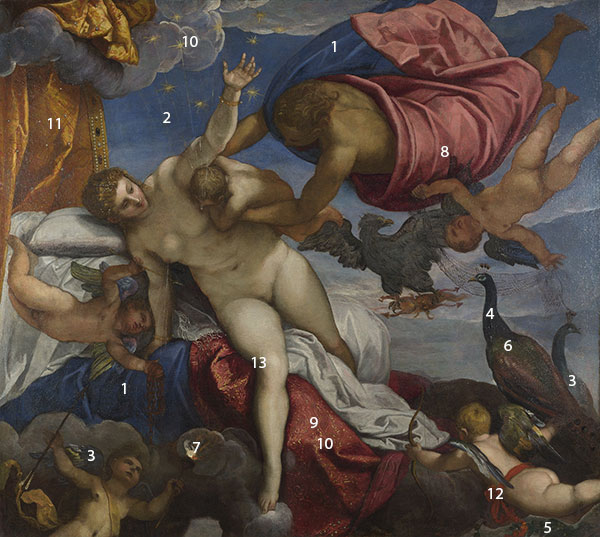
1 Blue drapery on the bed and the blue drapery of Zeus: natural ultramarine

2 Blue sky: natural ultramarine mixed with lead white
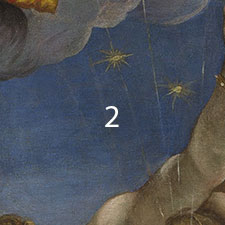
3 Blue plumage of the peacocks and blue wings of the angels (putti): azurite
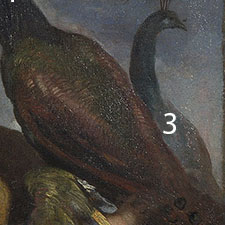
4 Darker blue plumage of the peacocks: azurite overpainted with a deep blue indigo glaze
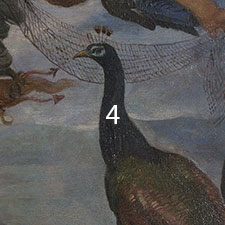
5 Blue-green drapery or cloud in the lower right corner: azurite and malachite
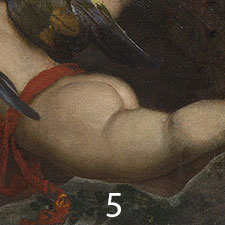
6 Green parts of the peacock’s feathers: azurite overglazed with copper resinate
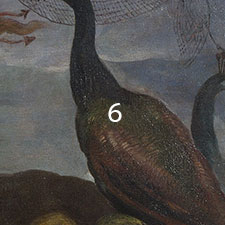
7 Flame of the torch held by the angel on the lower left: vermilion
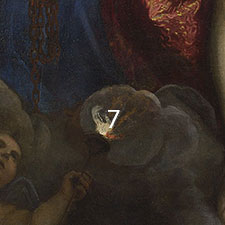
8 Zeus’ red cloak: vermilion, lac lake, and lead white
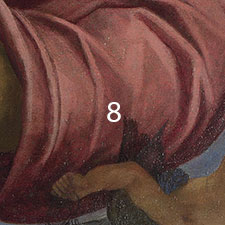
9 Crimson brocade on the bed: lac lake
10 Gold embroidery on the crimson brocade: lead-tin-yellow
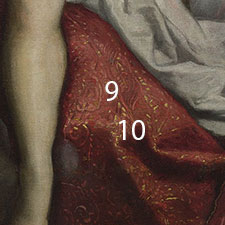
11 Yellow drapery on the right: yellow ochre
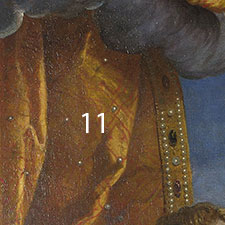
12 Red sash of the angel on the lower right side: vermilion, orpiment, and realgar
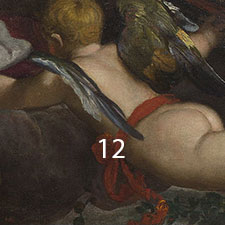
13 Shadow on the leg of Hera: contains green earth

References
(1) Plesters, J. ‘Tintoretto’s Paintings in the National Gallery: Part I‘. National Gallery Technical Bulletin Vol 3, 1979, pp 3–24.
(2) Plesters, J. ‘Tintoretto’s Paintings in the National Gallery: Part II‘. National Gallery Technical Bulletin Vol 4, 1980, pp 32–48.

